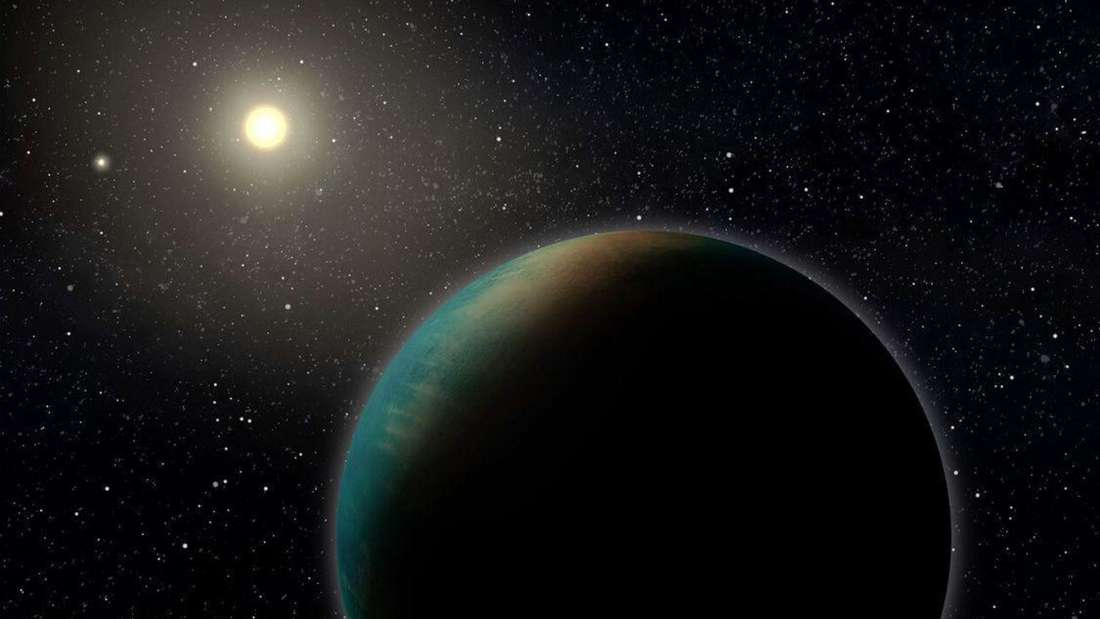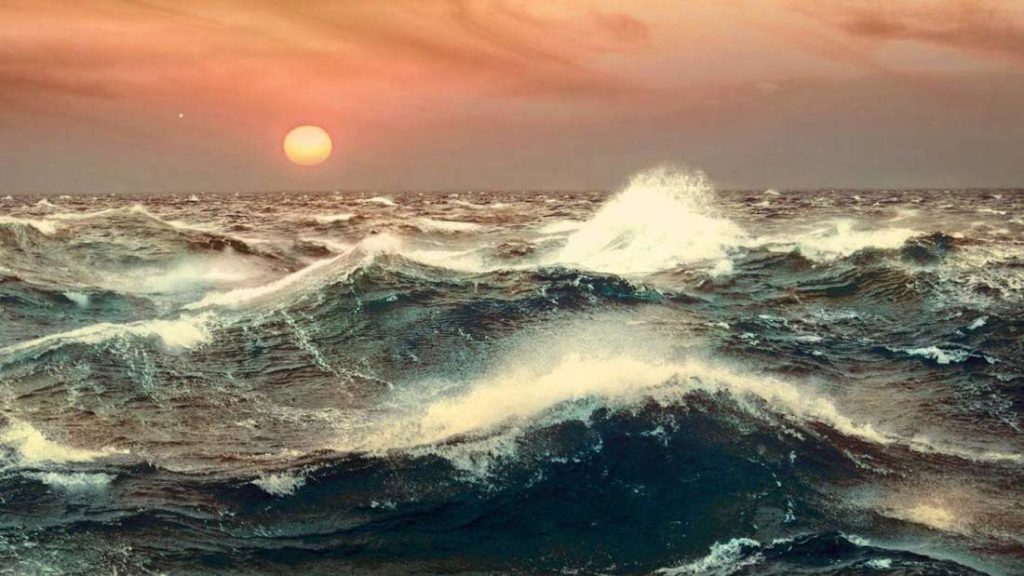Researchers from the University of Montreal have discovered an oceanic planet in a binary star system 100 light-years away.
FRANKFURT – In the movie “Interstellar”, the first planet to which the spaceship “Endurance” heads in search of an alternative to the now inhospitable Earth turns out to be an oceanic planet – completely covered in water. The researchers of our time do not yet have to start searching for a new home for humanity. However, they intensively observe exoplanets outside our solar system and use data from modern space telescopes for this.
A team of researchers from the University of Montreal (Canada) has now discovered a celestial body 100 light-years away that can come very close to the imaginary ocean planet “interstellar”. Designated TOI-1452 b, it orbits one of two relatively small stars in a binary system in the constellation Draco. Scientists described their discovery in the specialized journal “Astronomical Journal”.
It is possible that an exoplanet is an ocean planet
While the two stars are smaller than our sun, the water-rich exoplanet is about 70 percent larger than Earth and about five and a half times as massive. Most interesting is that TOI-1452 b orbits its star at a distance that allows a temperature on its surface that is neither too hot nor too cold to accommodate liquid water. The latter is considered a prerequisite for life. Researchers even suspect that the planet is completely covered by a thick layer of water, which makes it an oceanic planet.
TOI-1452 b was spotted by the US Space Agency’s Tess space telescope, which scans the sky for planetary systems close to our telescope. The telescope signal showed a slight decrease in the brightness of the slightly larger star in the binary every eleven days. Such a regular discontinuity is an indication of a planet in a probable orbit. TOI-1452 b was finally discovered with the help of the Observatoire du Mont-Mégantic, a telescope developed by Canadian researchers equipped with a camera that provides high-resolution images.
There is more water on the planet than there is on Earth
Astronomer Charles Cadieux of the University of Montreal explains: “It played an important role in confirming the nature of this signal and estimating the radius of the planet. We had to make sure that the signal that TESS detected was indeed from an exoplanet.”
The planet TOI-1452 b is completely different from our home. Although Earth is often referred to as the blue planet because about 70 percent of its surface is an ocean, it is “essentially a very dry planet,” according to a statement from the University of Montreal. In fact, water makes up “a tiny fraction of the mass – less than one percent”. Two University of Toronto scientists who specialize in modeling the inner workings of exoplanets have come to the conclusion that the water in TOI-1452 b may represent up to 30 percent of the planet’s mass.
satellite bulletin
Subscribe to free space newsletter And receive tips to read about twice a month astronomy And the space travel.
Most of the other oceanic planets are made of water vapor
In our solar system, too, there are celestial bodies with a supposedly large proportion of water. However, these are not planets, but Jupiter’s moons Ganymede and Callisto and Saturn’s moons Titan and Enceladus. Contrary to what is assumed for TOI-1452 b, its surface is not covered by liquid water, but it is likely to be largely covered by ice.
Exoplanets that could be oceanic planets similar to TOI-1452 b have also been discovered. These include the planet GJ1214b, discovered by the Hubble telescope in 2012, which orbits a red dwarf star 40 light-years from Earth and may only contain a small rocky core and a lot of water. Observations showed that its atmosphere likely consisted mostly of water vapor. Ocean planets are also suspected in the Kepler-62 star system, which is 1,200 light-years away.
Liquid water does not guarantee the possibility of life on a planet
Although liquid water is considered a requirement for life, that does not automatically mean that planets with a lot of it are habitable places. A study published in 2016 by researchers from Belgium, Germany, Austria and France suggests that too much water can actually be a barrier to the emergence of life. If a lot of it covers the planet, then the pressure at the bottom of the ocean rises sharply. The result: the formation of “high pressure ice”, which has a particularly dense crystalline shape and is deposited on the sea floor. As a result, they become a barrier, thus separating the sea floor from the atmosphere, so that exchange is no longer possible. However, for life to develop, both minerals from the ocean floor and organic matter from the atmosphere are required.

The exoplanet TOI-1452 b will now be closely monitored with the new James Webb Space Telescope in order to be able to better assess its properties. “As soon as possible, we will book time on Webb to observe this strange and wonderful world,” says René Doyon, director of the Observatoire du Mont-Mégantic at the University of Montreal. (Pamela Doerhofer)
but also in In the solar system there could be another planet unknown before Give. But more precisely No one can locate this planet yet.

“Total coffee aficionado. Travel buff. Music ninja. Bacon nerd. Beeraholic.”







More Stories
Researchers detect extremely high-energy gamma rays
Anxiety disorders in old age increase the risk of dementia
Researchers are particularly fascinated by these exoplanets.